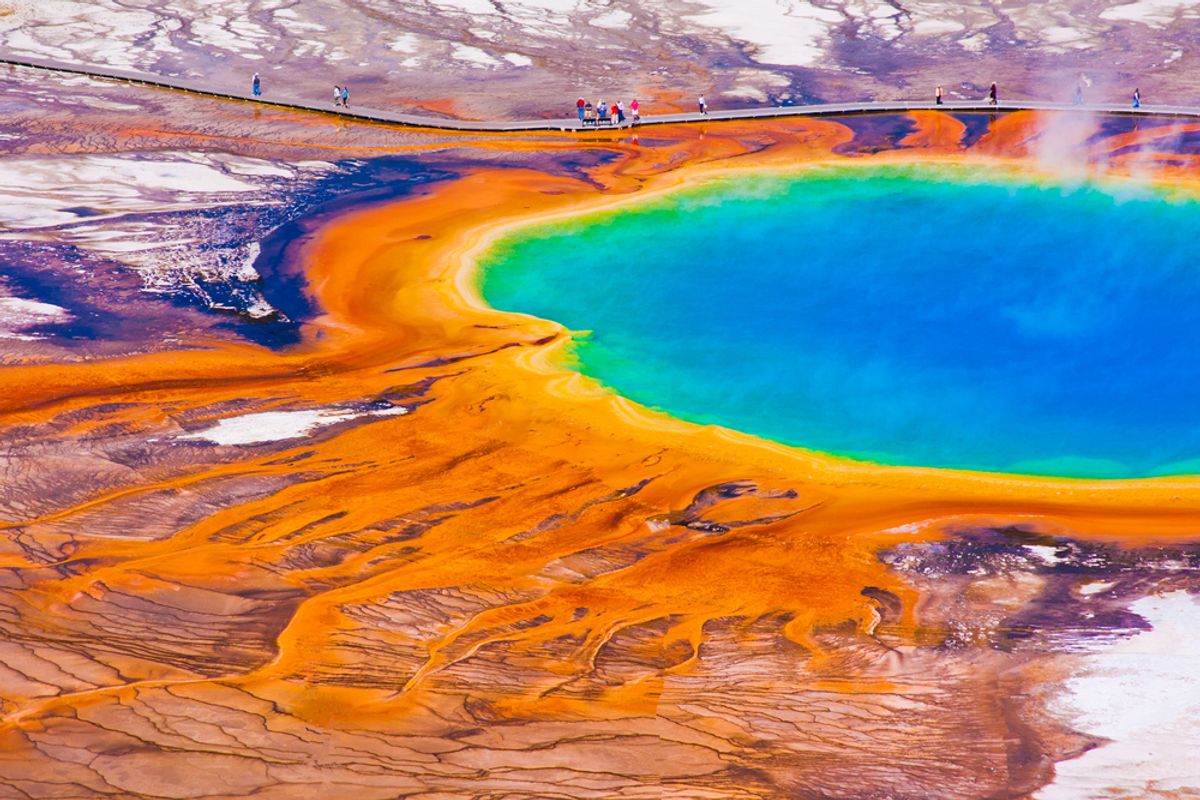One of America's most famed natural wonders -- the vibrant, prismatic hot springs of Yellowstone National Park -- looked a lot different before tourists came along.
Most famously, the Morning Glory Pool used to be bright blue; it's now more commonly known as "Fading Glory" or, even more accurately, "Garbage Dump," because of what happened when humans started clogging it with trash. And for the first time, researchers have come up with a model to explain why.
Writing in the journal Applied Optics, researchers at Montana State University and Brandenburg University of Applied Sciences in Germany determined that the unique characteristics of Morning Glory Pool, along with Sapphire Pool and the Grand Prismatic Spring, are related to the springs' temperatures. Back before Yellowstone became a National Park in 1872, they explain, Morning Glory was significantly hotter, and bluer. But over the years, an "accumulation of coins, trash and rocks" began to block the underwater vent heating the pool, causing its temperature to drop. That, in turn, created a change in the spring's microbial mat -- the complex community of microbes dependent on its hot waters -- ultimately shifting the appearance of the shallow waters to the orange, yellow and green spectrum we see now.
In deeper waters, the authors add, the absorption and scattering of sunlight remains the determining factor, which is why the pool's center remains blue. But on the pool's edges, the altered microbial mat composition wins out.
The researchers were able to model what the Morning Glory pool looked like in its hotter days, between the 1880s and 1940s:

These are historic and current simulations of Morning Glory Pool, using bare rock and pure water of varying depth for the historic image and a uniform orange microbial mat and pure water of varying depth for the current image (Nugent, Shaw and Vollmer).
"There are people at my university who are world experts in the biological side of what's going on in the pools," co-author Joseph Shaw explained of the study's potential applications. "They're looking for ways to monitor changes in the biology -- when the biology changes, that causes color changes -- so we're actually looking at possibilities of collaborating in the future."
For now, though, it serves as a sad, if breathtaking, reminder of all of the objects that we've dropped, either intentionally or accidentally, into Yellowstone's hot springs over the years: the list includes coins, laundry, soap, a couch and a drone.

Shares